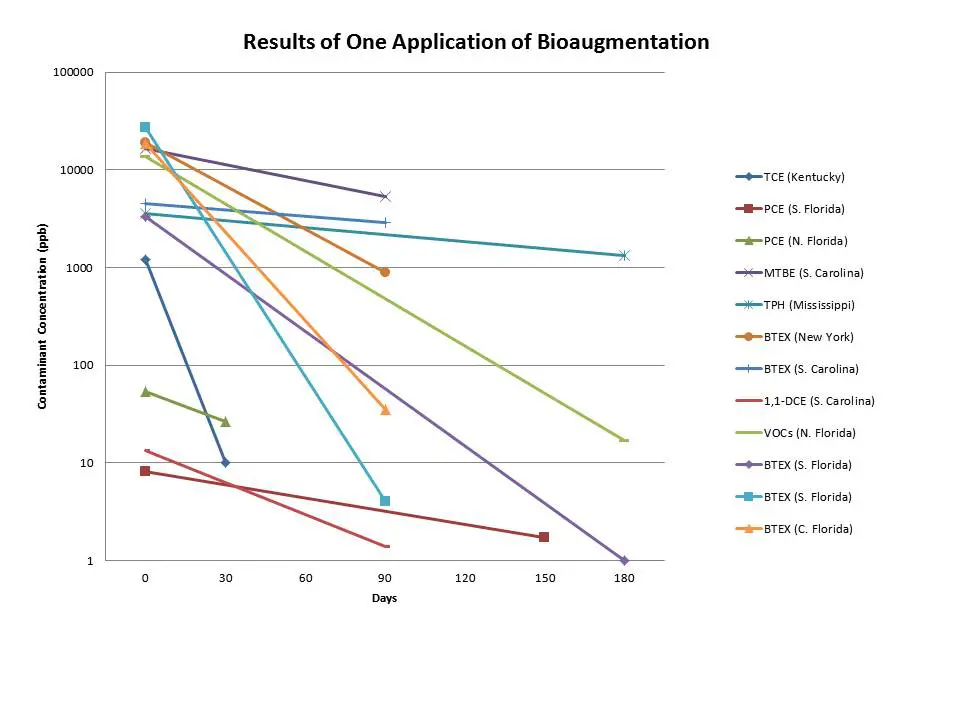Bioremediation of Industrial Fill
Historical industrial sites often have deposits of fill material containing a wide range of organic contaminants. Perched ground water present in the base of the fill is usually impacted by the contaminants and may provide a mechanism for off-property migration of the contaminants. The organic contaminants are wide spread throughout the fill without a well defined source area. Cost-effective remediation is difficult with this combination of conditions.
Bioaugmentation with CL-Out or Petrox can remove the contaminants from the fill and perched water by destruction in place. The organisms in CL-Out and Petrox can metabolize a wide-range of organic chemicals at concentrations from separate-phase layers to part per trillion levels. Soil and ground water contaminants are addressed simultaneously though injection of the microbes without disturbing the site operations.
The following table shows typical results from a single application of Petrox to contaminated soil and perched ground water on July 10, 2011. The remediation progress was tracked by ground water monitoring because it was the easiest sampling method once wells were in place. The results show that within 30 days the contaminant concentrations in perched water were reduced by 50%. After 60 days there was slight rebound in come of the contaminants, showing that more soil treatment may be necessary if lower cleanup goals needed to be maintained.
The results show that within 30 days the contaminant concentrations in perched water were reduced by 50%. After 60 days there was slight rebound in come of the contaminants, showing that more soil treatment may be necessary if lower cleanup goals needed to be maintained.


